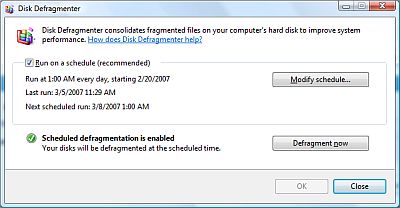Just a few random observances of what my life as a published author has been like compared to what I had expected or hoped for. Keep in mind that I can only speak for my own experiences as a debut novelist with a large independent U.S. publisher. Your mileage may vary.
To summarize, I quote the great Bruce Springsteen: “There I was one night, just a normal guy. And then, there I was the next night. Goddamn, I was still just a normal guy.”
And now, Five Things That Don’t Happen When You Become a Published Author:
1. Money does not suddenly rain down from the sky. Well, it hasn’t for me, at least. I’m sure it has for Naomi Novik, whose debut novel was optioned by the great Peter Jackson. And I suspect Gordon Dahlquist, whose debut novel The Glass Books of the Dream Eaters earned a gajillion-dollar advance from Bantam, isn’t clipping coupons right now. But as my buddy Tobias Buckell revealed in his author first novel advance survey, first novel advances in SF/F are actually rather paltry — $5,000 on average.
Über-blogger and Campbell Award winner John Scalzi reveals that he made $67,000 off his SF writing in 2006. Now $67,000 is nothing to scoff at, and I suspect Mr. Scalzi’s take will only be going up in the next few years, but don’t forget that publishers don’t pay benefits.
Not only is it unlikely you’ll get richer writing novels, it’s likely you’ll get poorer. Why? Because chances are you passed up on much more lucrative opportunities to devote time to your writing. And you probably spent a wad of your own cash promoting your book.
2. Your career worries do not melt away. I made a conscious decision to quit my full-time job in November of 2000 and carve out time to write. Since then, I’ve been doing a series of contract and part-time jobs that take up between two and four days of my week.
But the problem for the Writer With a Day Job is that the folks at the Day Job wonder how committed you are to their work. It’s a fair question. I try very, very hard to segregate my working and writing lives, but I’d be lying if I claimed I’ve never opened Microsoft Word in the middle of a meeting to frantically dash out plot points that suddenly popped into my head.
So many writers find themselves in career limbo. You’re not likely to make a good living writing novels; but to give up the writing to concentrate on climbing the ladder in your day job is unthinkable. The result? A juggling act.
3. Your lifestyle and self-image do not dramatically shift. Before I was published, I had a lot of thoughts about how different things were going to be once I was published. I’m going to read more, I’m going to eat better, I’m finally going to paint over those ugly water stains on the ceiling in the basement, little blue Sport & Health Club Pixies are going to wake me up every morning and whisk me off to the gym on a magic cloud.
Needless to say, this hasn’t happened. I’m very happy that I get to devote time to doing something I love. But I felt the exact same way about writing before I made any money at it. The big shift in your self-perception comes when you actually make a commitment to your writing, not when someone finally writes you a check for it.
 That’s kind of how I feel trying to learn
That’s kind of how I feel trying to learn 
 And why have I never suffered from a virus outbreak? Because, despite what you see and hear all over the Internet and the media, the security problems of Windows are vastly overblown. Windows is and has always been a fairly secure operating system, if you know what you’re doing.
And why have I never suffered from a virus outbreak? Because, despite what you see and hear all over the Internet and the media, the security problems of Windows are vastly overblown. Windows is and has always been a fairly secure operating system, if you know what you’re doing.


 1. Atari. The mass market videogame console was more or less invented by Atari in the late ’70s. Their only real competitor for years was Mattel’s Intellivision, which may have had vast technical superiority but had inept marketing. (George Plimpton? You’ve got to be kidding me.) But instead of innovating, Atari took the road of suing anyone and everyone who touched its much-beloved system. (Activision, Coleco, Starpath, Odyssey, Nintendo, Phillips, and Epyx all suffered Atari’s litigious wrath.) There was also a precipitous drop-off in videogame quality, as anyone who remembers notoriously bad media tie-ins like E.T. The original company was sold off many times and finally diluted to nothingness in the ’90s. The name still had such cachet, however, that Infogrames later licensed it for themselves.
1. Atari. The mass market videogame console was more or less invented by Atari in the late ’70s. Their only real competitor for years was Mattel’s Intellivision, which may have had vast technical superiority but had inept marketing. (George Plimpton? You’ve got to be kidding me.) But instead of innovating, Atari took the road of suing anyone and everyone who touched its much-beloved system. (Activision, Coleco, Starpath, Odyssey, Nintendo, Phillips, and Epyx all suffered Atari’s litigious wrath.) There was also a precipitous drop-off in videogame quality, as anyone who remembers notoriously bad media tie-ins like E.T. The original company was sold off many times and finally diluted to nothingness in the ’90s. The name still had such cachet, however, that Infogrames later licensed it for themselves.